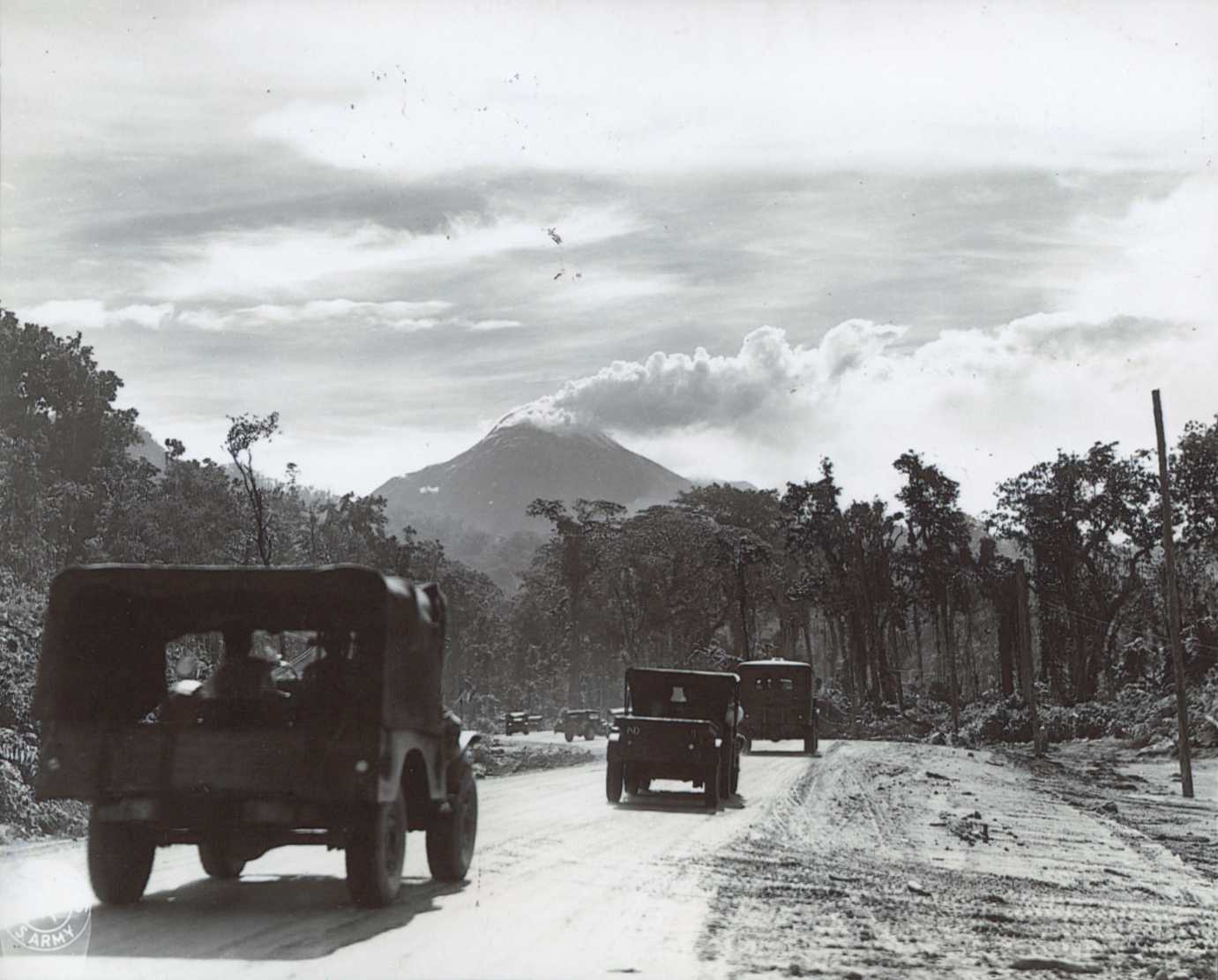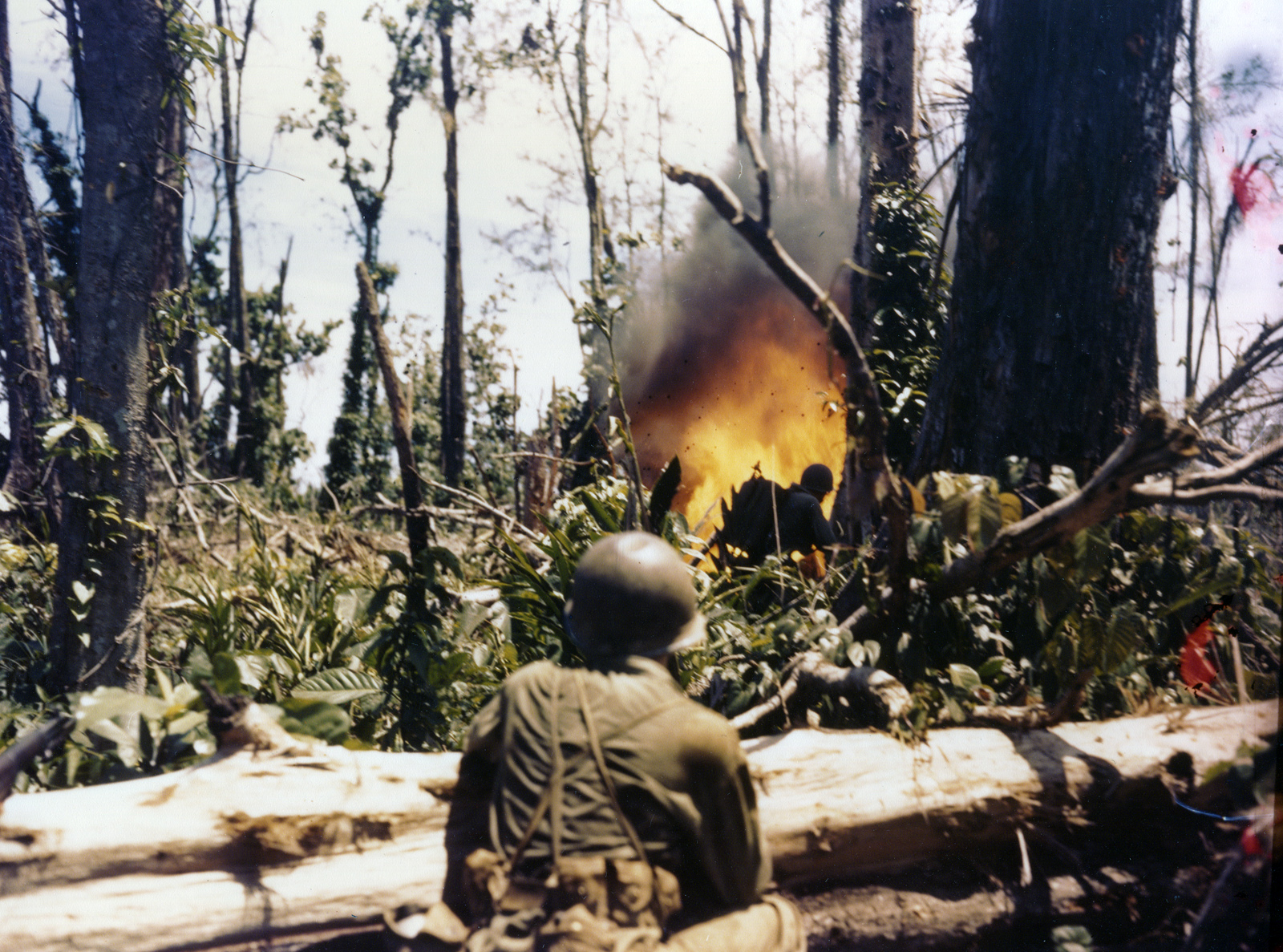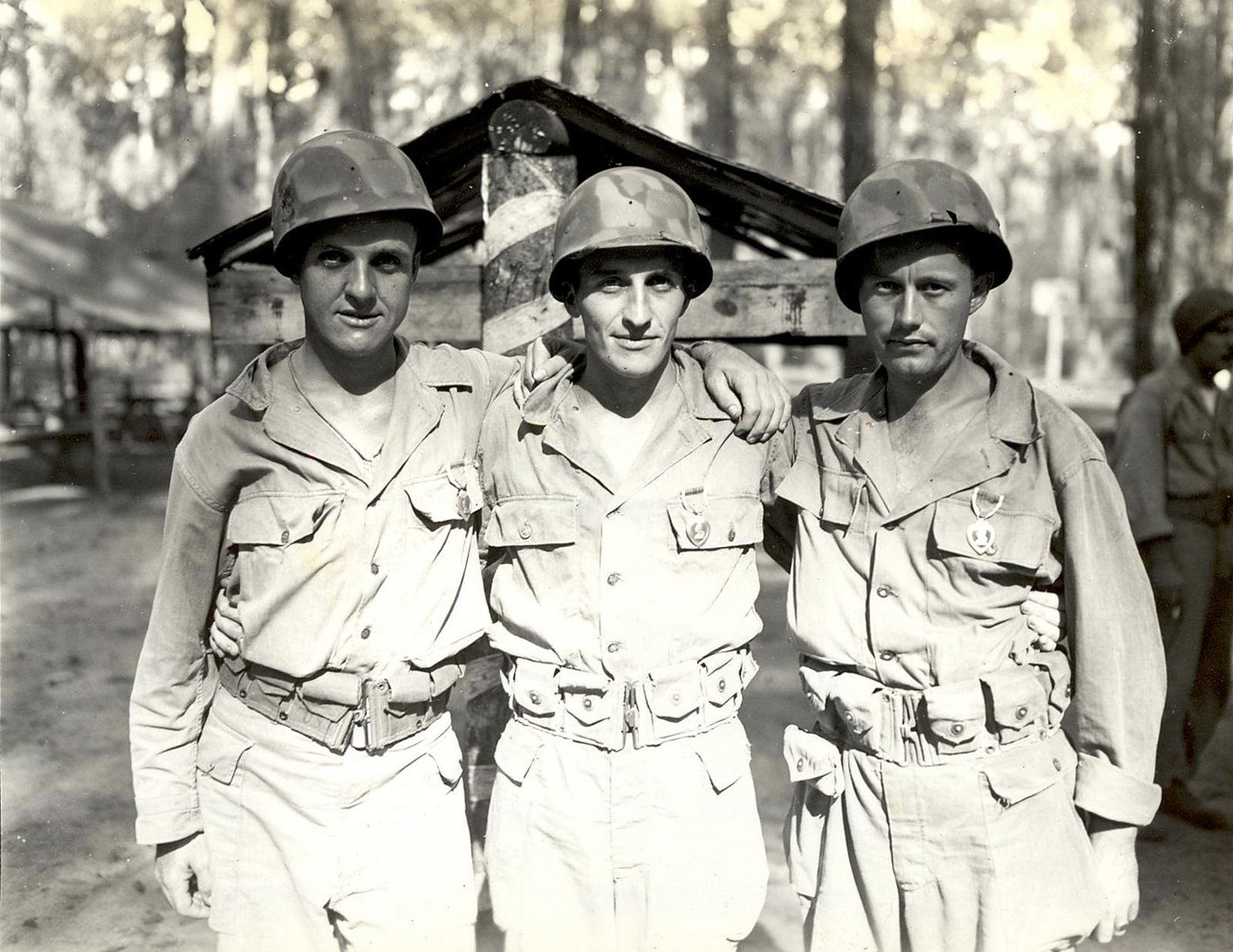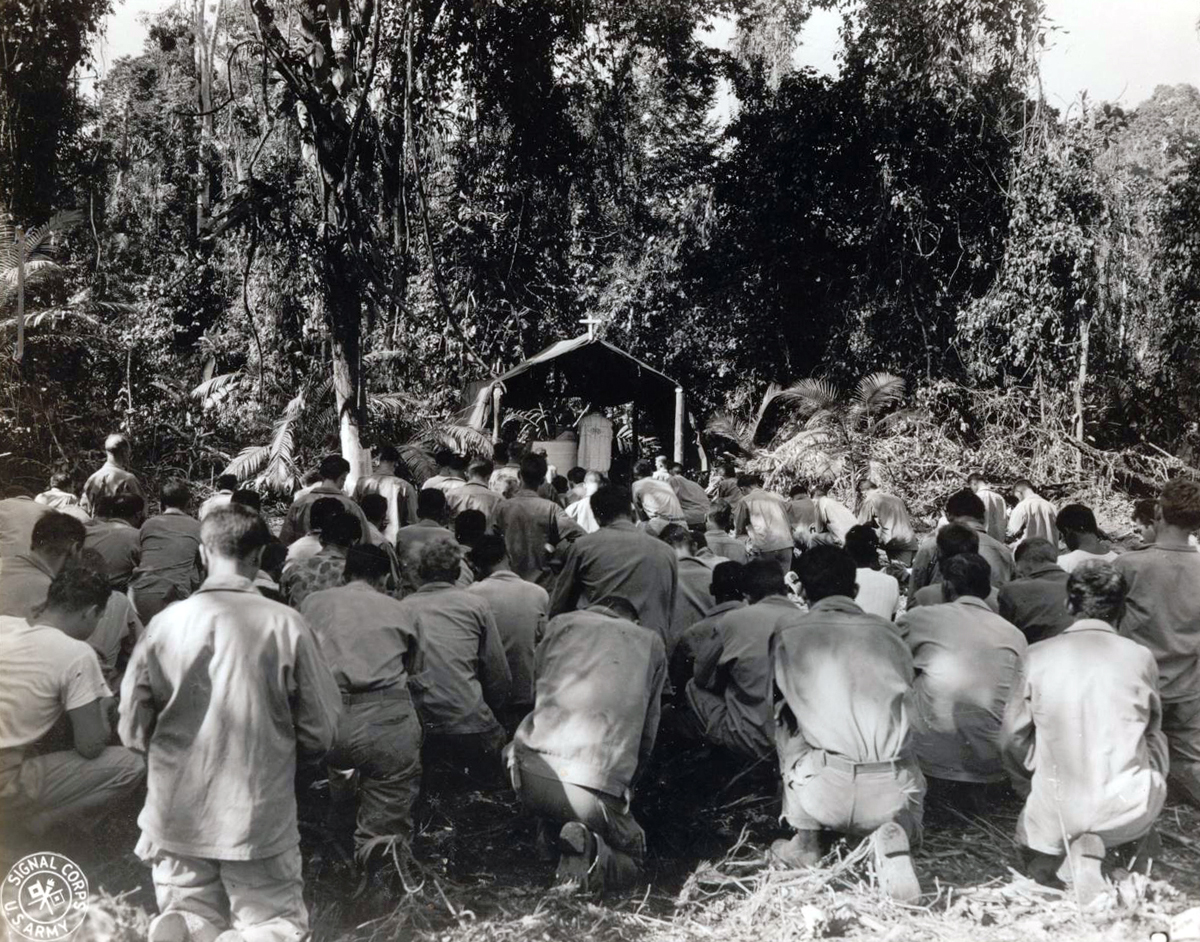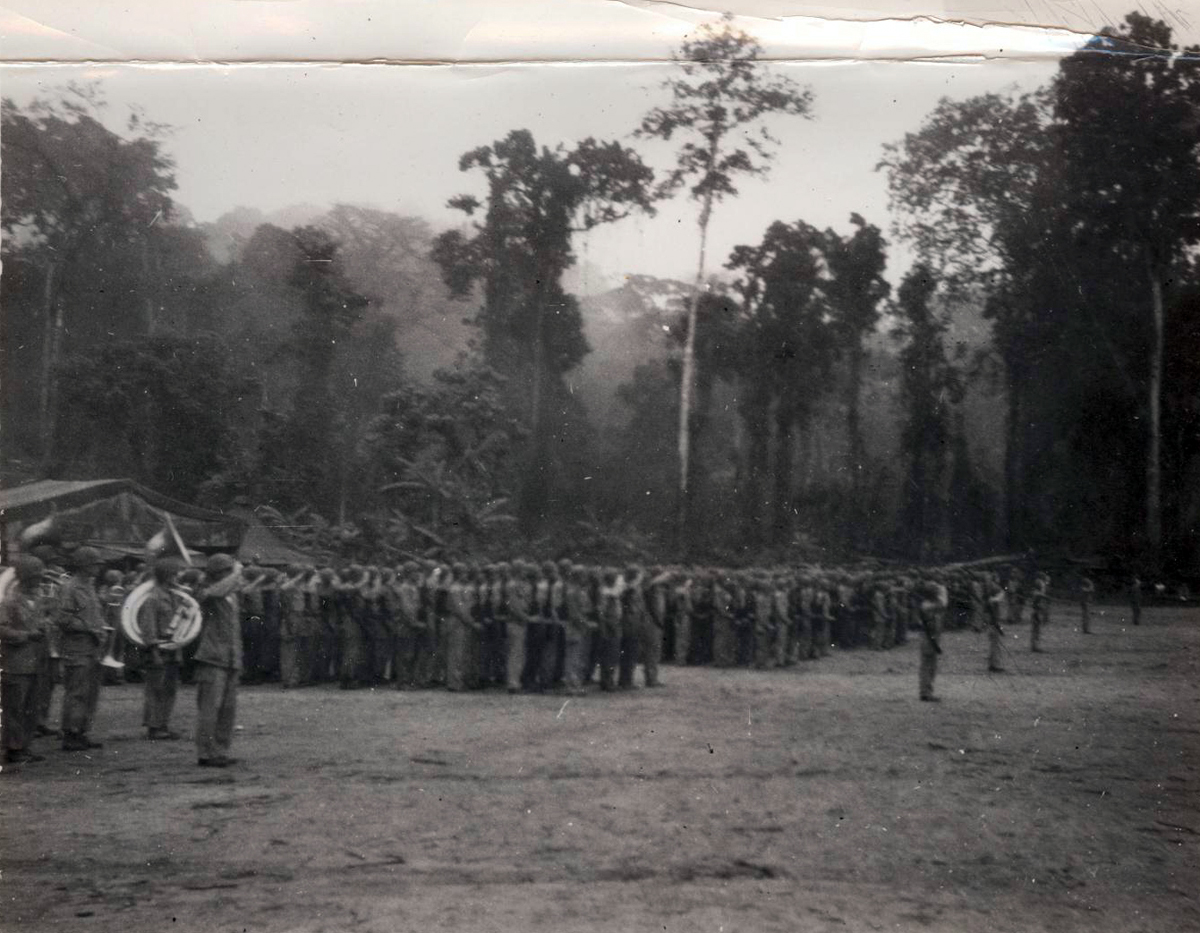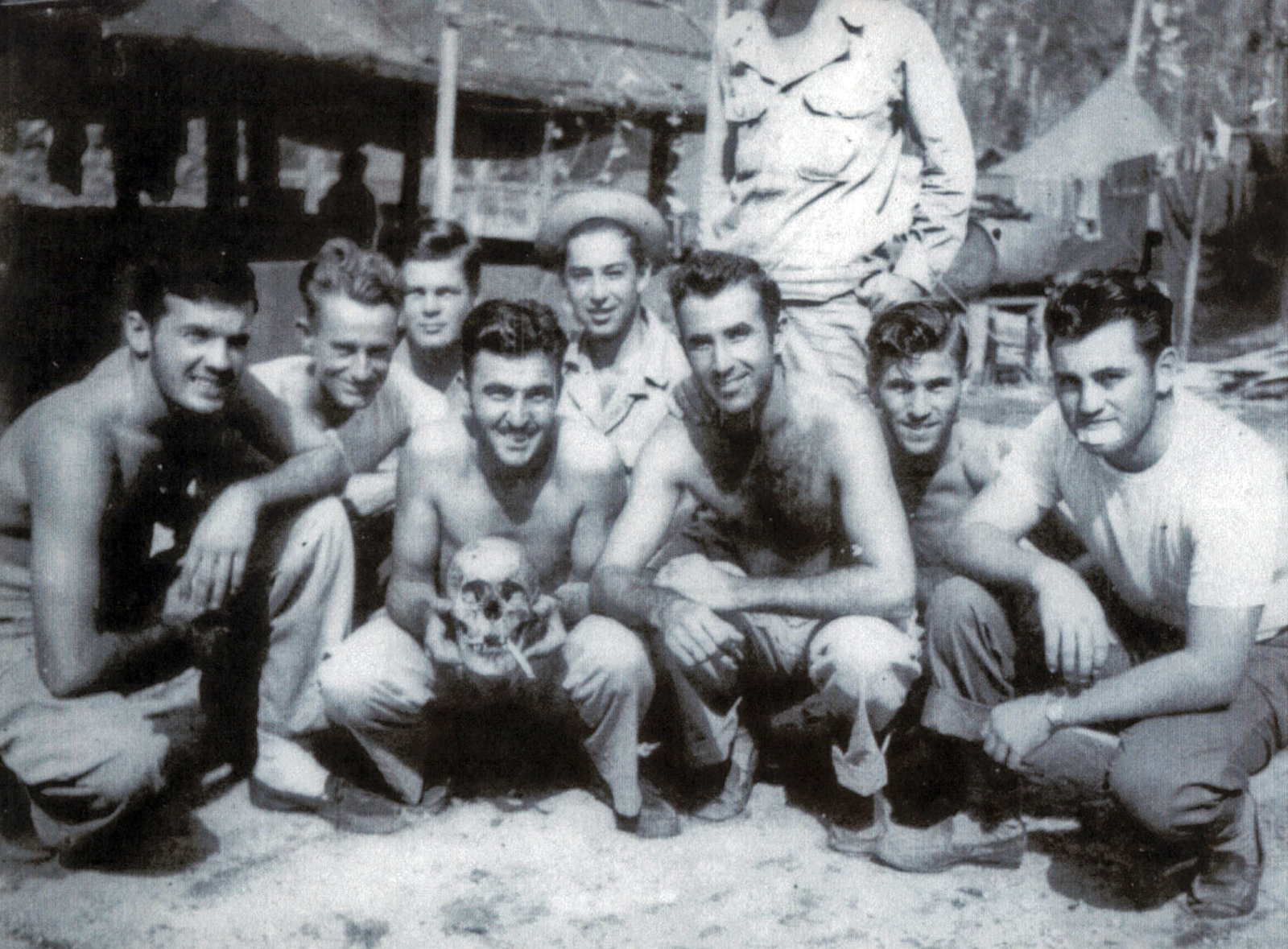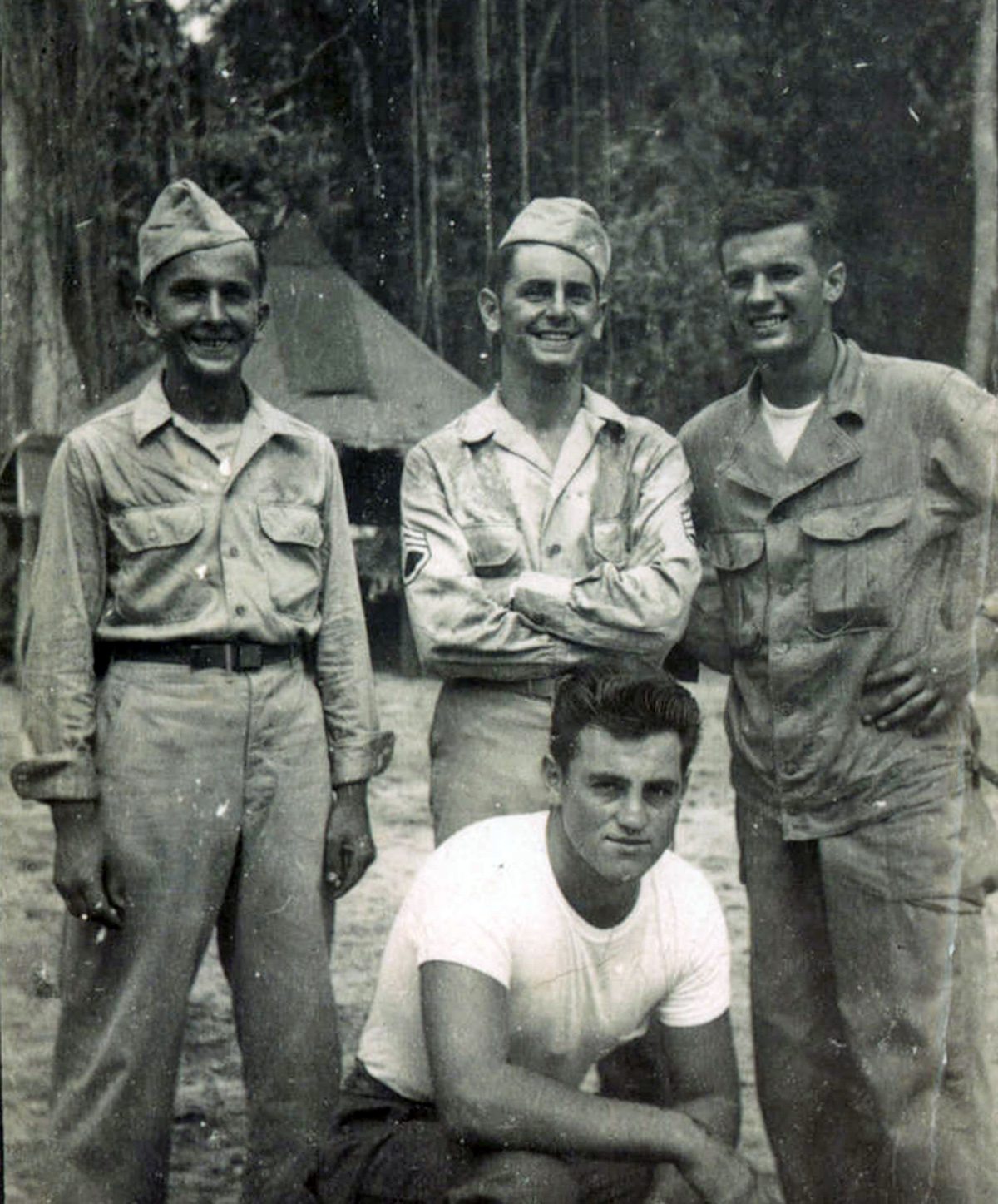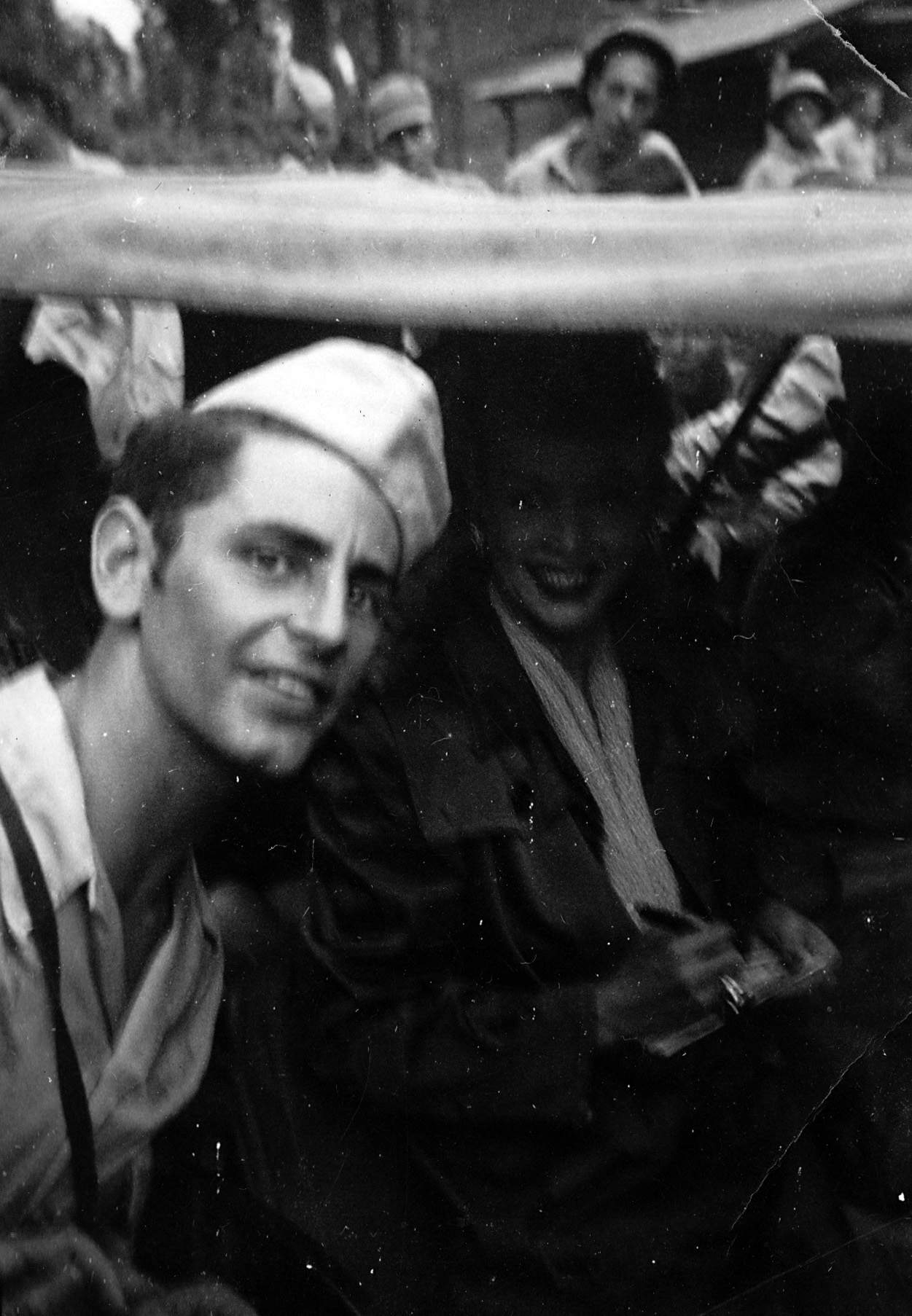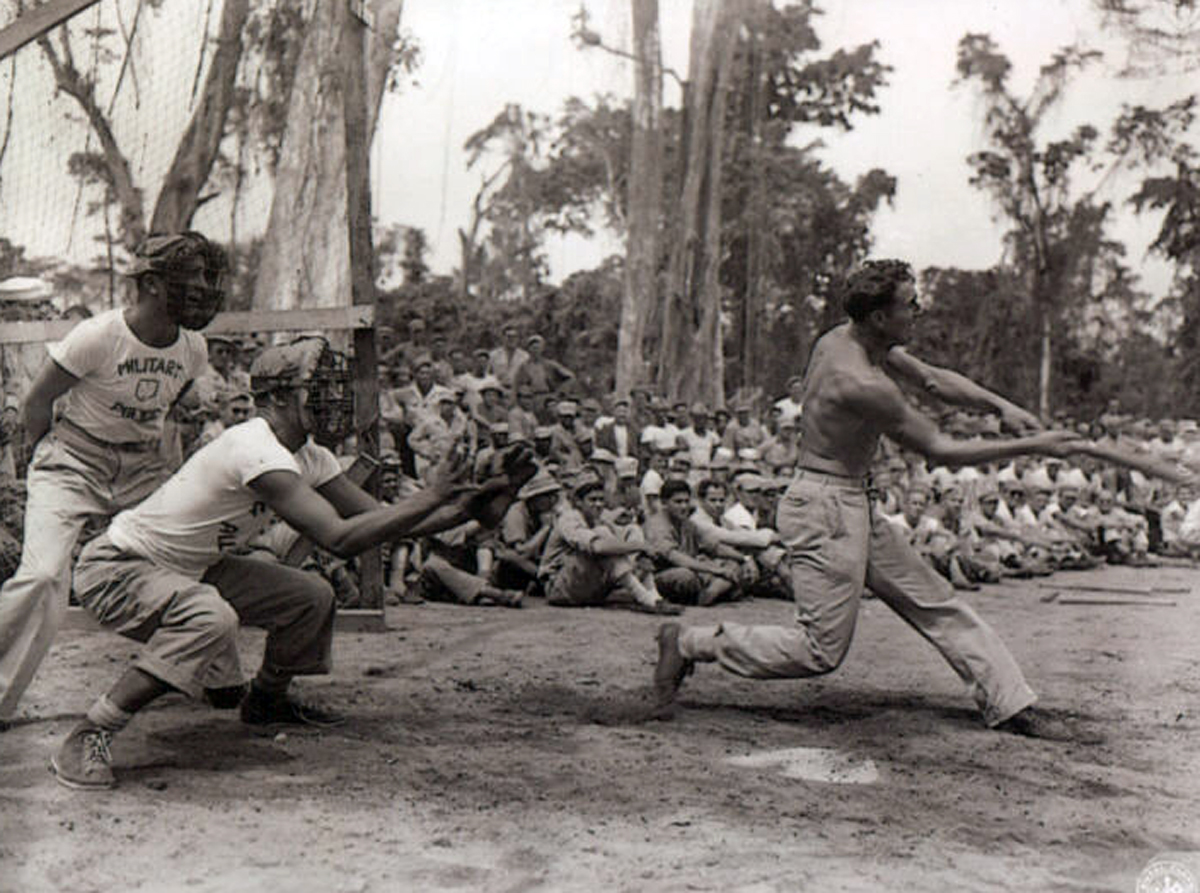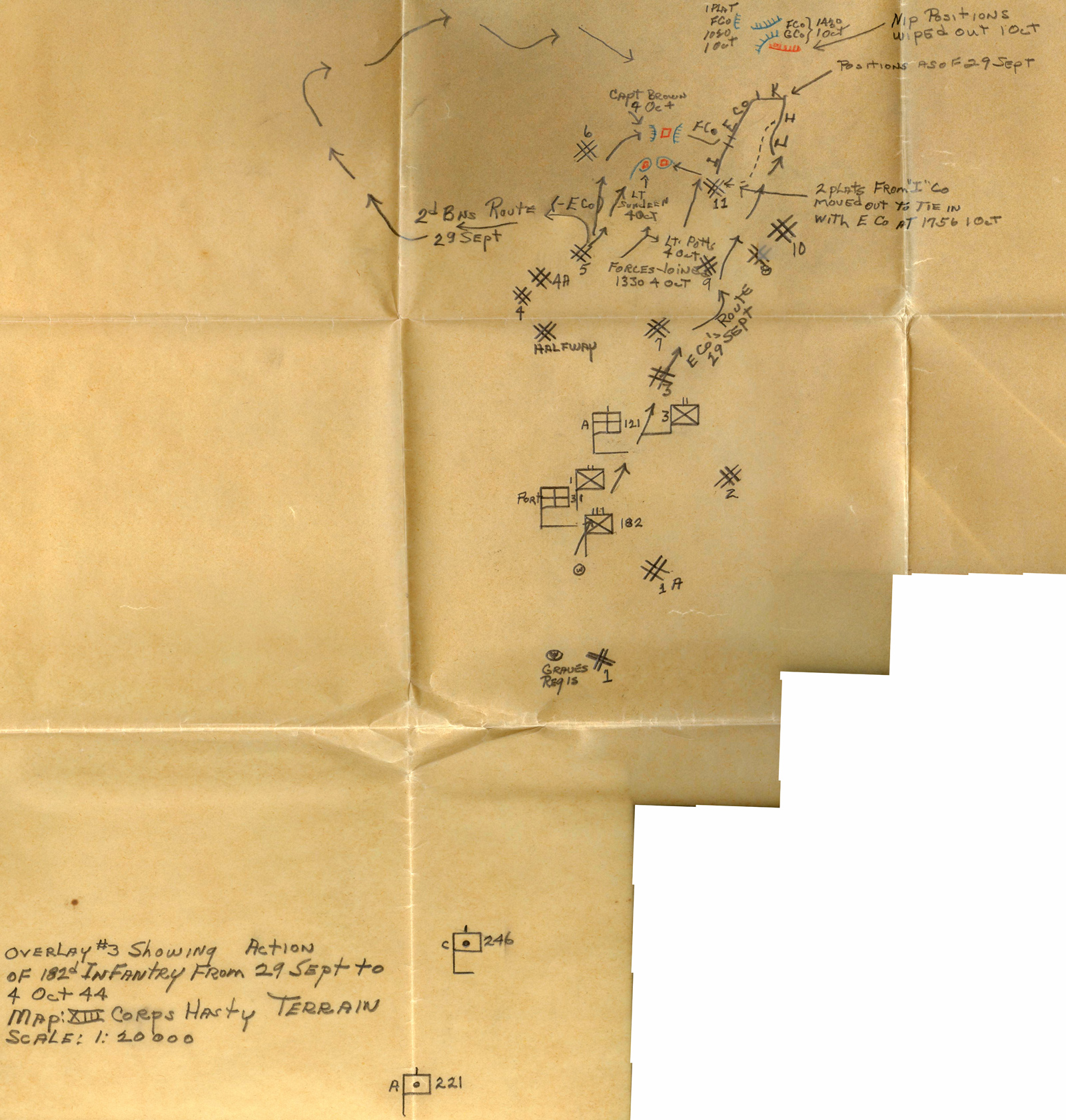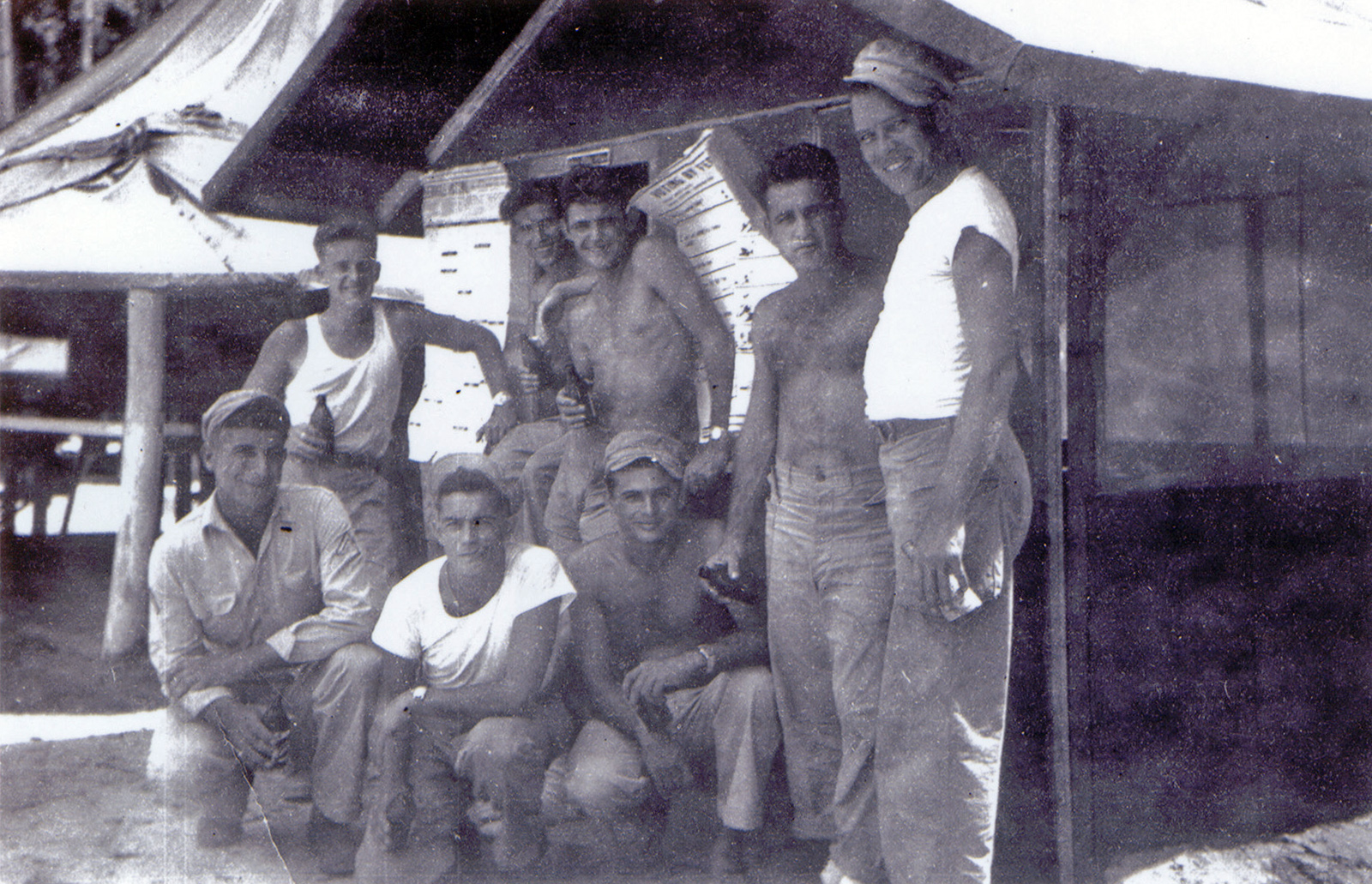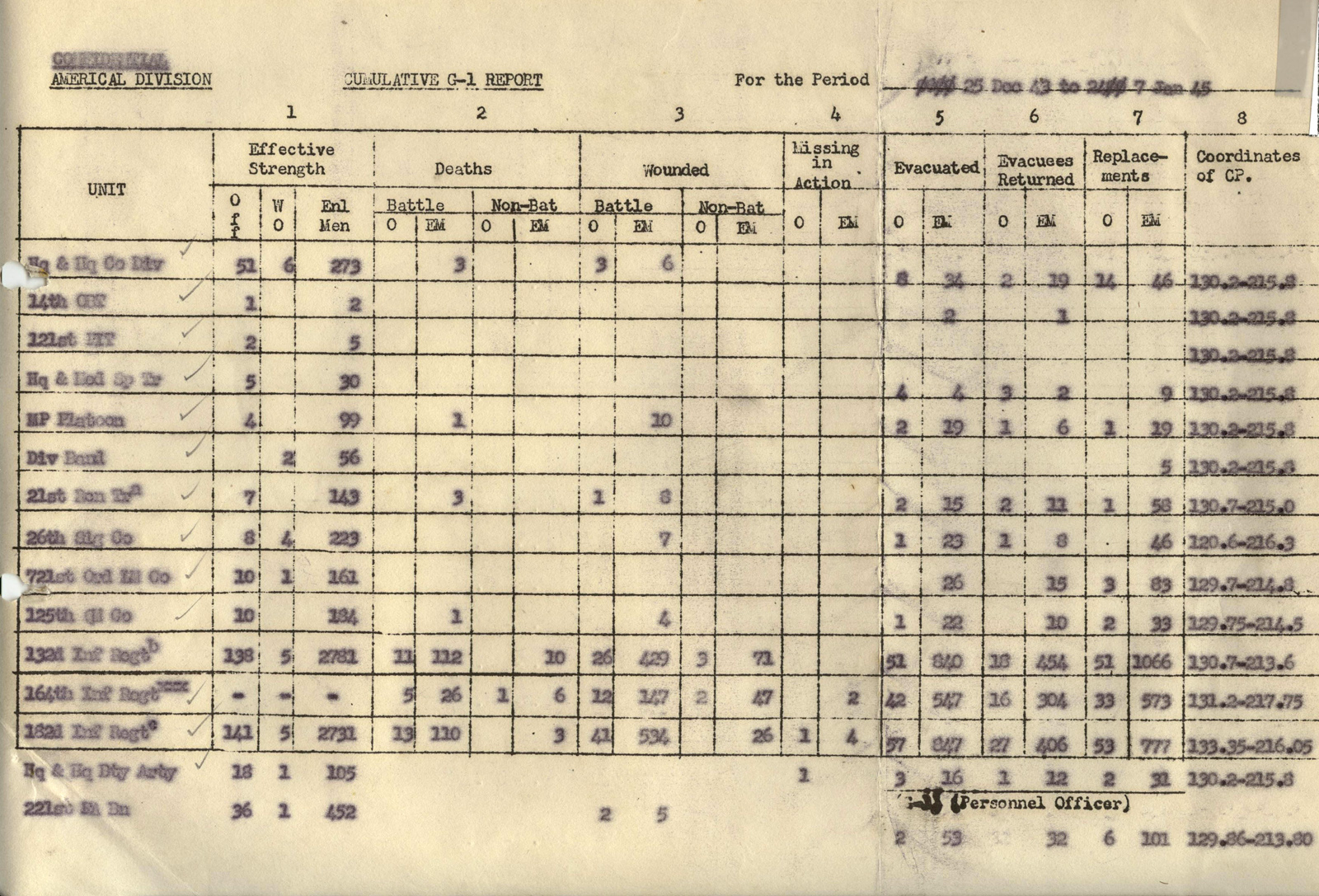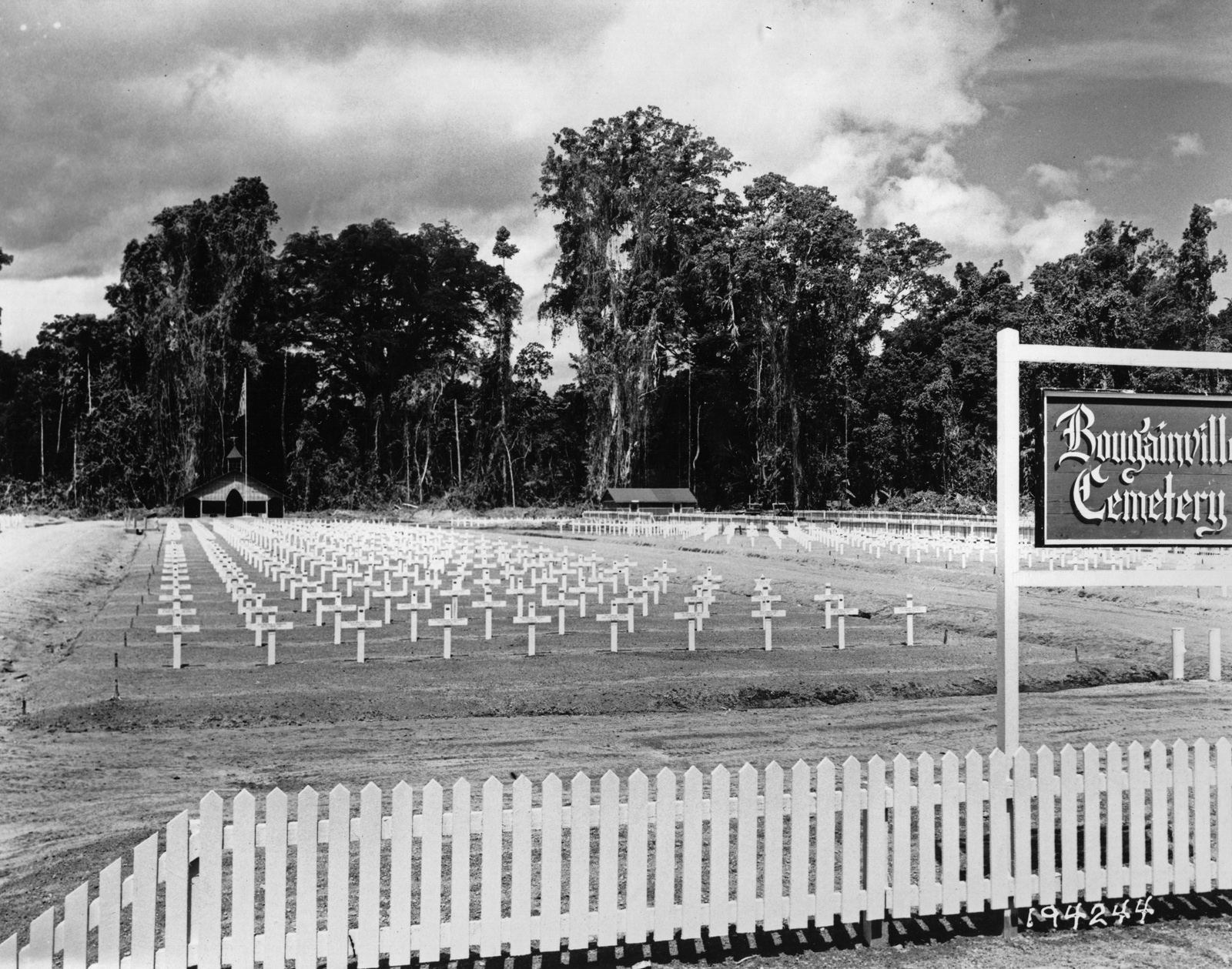After their defeat in the March 1944 offensive, Japanese forces on Bougainville faded into the jungle. Thousands of fighting men remained, but they were cut off from their homeland and resupply, and no longer a significant threat to the heavy Allied presence on the island. By this point in World War II, Allied air and sea power had made life in the Pacific very difficult for the Japanese military, making it nearly impossible for them to supply their troops dispersed across thousands of miles of ocean. For the remainder of 1944, the two sides on Bougainville probed each other out, and engaged in occasional firefights and small battles. But there were no further major engagements on the scale of the March clash. American command saw no need for unnecessary loss of American life in large scale jungle offensives, when the Japanese on the island were essentially neutered and stranded. The Pacific island hopping campaign had moved on past Bougainville.
While American forces were not tasked with crushing Japanese forces on Bougainville, they continued to run regular patrols into the jungle, and engaged in frequent firefights. In the weeks following the Battle for Hill 260, Americal units aggressively patrolled into the jungle. The American perimeter was expanded, and patrols pushed miles into the jungle in search of the enemy. Americal units moved southeast along the edge of Empress Augusta Bay, past the Torokina River and the Mavavia River, into the area of the Saua, Tekessi, and Reini Rivers. Photo #1 shows the growing Allied infrastructure on Bougainville in May 1944. The smoking peak of Mount Bagana can be seen looming in the background. Contact with the enemy was frequent on jungle patrols, and the Japanese troops that had not retreated southeast were eradicated or forced back. In Photo #2 from April 1944, a soldier with a flamethrower attacks an enemy position.
The fighting on Hill 260 led to many awards for bravery and injury suffered in action. In April, a number of awards were bestowed on soldiers of the 182nd Infantry. In Photo #3 (L-R) Edward Monahan, William Joyce, and Daniel Ramsey pose in the company area with their newly pinned Purple Hearts. Note that this improved camp area features wooden structures, tables, even a sign looking like a barber pole – a vast improvement over the primitive living conditions when the unit first arrived. Much of the life of an infantry soldier in the Pacific was strange and disorienting. Climate, geography, and local culture often left soldiers homesick. Occasional touches of familiarity and home were of great comfort, such as the April 1944 Easter Mass seen in Photo #4, celebrated by the 182nd’s Father Laurence Brock. In May, a large ceremony was held with the entire 182nd Infantry Regiment, featuring marching in formation, and a review by senior officers. In Photo #5, soldiers of the regiment muster with the dense canopy and mists of Bougainville in the background.
While the soldiers of the unit alternated between combat missions and life in camp, for obvious reasons, photos taken by the soldiers are almost exclusively of the more relaxed times in camp. In Photo #6 a number of soldiers, mostly from the 2nd Platoon of Company G, pose with a skull smoking a cigarette. The soldiers are: (L-R: Robert Egler, unknown, Arnold West, Richard Roy, unknown, Inky Simmons, unknown standing, Doherty, and Jack Morton). Photo #7 shows (L-R: Ed Gekosky, Patrick Farino, Robert Egler, Jack Morton – kneeling) from Company G, in the company camp on Bougainville.
In between patrols, soldiers on Bougainville took in movies in outdoor theaters made of logs, or attended occasional USO events hosted by celebrities such as Bob Hope and Carole Landis. Patrick Farino of Company G bet his friends that he could get photos with the female celebrities, and sure enough, his photo collection is full of images like Photo# 8. The also played sports like softball. Occasionally, Japanese soldiers could be seen in the distance, trying to observe a game. On the Fourth of July, a heavily anticipated matchup between the Americal Division All-Stars, and their counterparts from the 37th Division, resulted in heavy wagering. The game, seen in Photo #9, was won by the Americal team, 3-0.
In September and October 1944, Company G participated in operations in the area of the Laruma River, northwest of Torokina. For the past few months, American forces had pushed into the jungle in this area, finding it to be unusually dense, with steep, nearly impassible hills. The only mode of travel was by established trails cut through the undergrowth. Trail blocks had been established in July and August, in order to thwart Japanese movement. Fighting had been sporadic, and the Japanese had been pushed back deeper inland. The 182nd was assigned to the Laruma River at the beginning of September. On 14 September the men of Company G, along with the entire 2nd Battalion, took over from the men of the 3rd Battalion, who had spent a relatively quiet 2 weeks patrolling and manning road blocks. 2nd Battalion patrols soon identified a strong Japanese position. This heavily defended position rebuffed all advances by the 2nd Battalion, so the full 182nd was called in to encircle the outpost. In the first week of October, American artillery pounded the position, and the 182nd advanced and destroyed dozens of pillboxes and killed many Japanese troops. In the map overlay shown in Photo #10, routes of movement for units of the 2nd Battalion are shown, with Japanese positions in red. Note that at top right, Company G participated in an attack, with the comment “Nip positions wiped out 1 Oct.” (Note: this large sized map was scanned in several sections, and digitally assembled. Some sections have remaining discoloration from that process.) As this offensive continued, with the 182nd advancing on Japanese positions outside the village of Piateripaia, mother nature intervened. Heavy rain grew progressively worse, followed by too-late warnings of an approaching hurricane. Rivers began to flood, washing away trails and even bridges, swamping both men and equipment. Gale force wind roared through the high treetops. For three days the jungle was pummeled, with the men of the 182nd trapped, far from camp. When the skies finally cleared, the advance on Piateripaia resumed. It was not destined to succeed, and the soldiers were too exhausted from weathering the storm, and the native Fijian guides were unable to navigate trails which had been ravaged by the storm. The offensive was called off, and the 182nd was relieved by the 132nd on 13 October.
The soldiers of the Americal had a chance to vote in the 1944 presidential election while stationed on Bougainville. For many, this would have been the first time they were even old enough to cast a ballot. In Photo #11, soldiers of Company G (including Tony Dziuszko, center rear, with shirt off) pose at the election station, with beer bottles in hand. Voting instructions can be seen hanging on the board behind the men.
By Thanksgiving, offensive operations by the Americal on Bougainville had ended, and the focus was on training for operations in 1945. This included jungle tactics and amphibious operations. By late December, the division was packing and preparing for departure. In January, the men began boarding ships, headed for parts unknown. The entire year of 1944 had been spent on an island shared by the Japanese. The units of the Americal Division suffered many casualties – particularly during the March Japanese counterattack. The 182nd Infantry Regiment ( a unit numbering approximately 3,000 men) reported 123 men killed in action, as well as 44 in non-battle incidents. 575 were wounded in action. Over the course of the year on the island, the regiment brought in 830 men to replace losses, as can been seen in the Americal Division G-1 Report in Photo #12. Many men from Company G were likely interred at this neat, orderly cemetery on Bougainville, seen in Photo #13 taken in 1944. After the war, these men were either repatriated to the United States, or moved and reburied at the Manila American Cemetery in the Philippines.
The American strategy to hold the line appears in retrospect to have been a wise one. In 1945, control of Bougainville was turned over to Australian troops, who attempted to wipe out the remaining Japanese forces trapped on the island. The Australians suffered over 500 dead and more than 1500 wounded, and failed to defeat the Japanese holdouts. At the end of the war, more than 15,000 Japanese troops surrendered to the Australians.
Next Chapter: Leyte: Mop-up Turns to Slaughter

